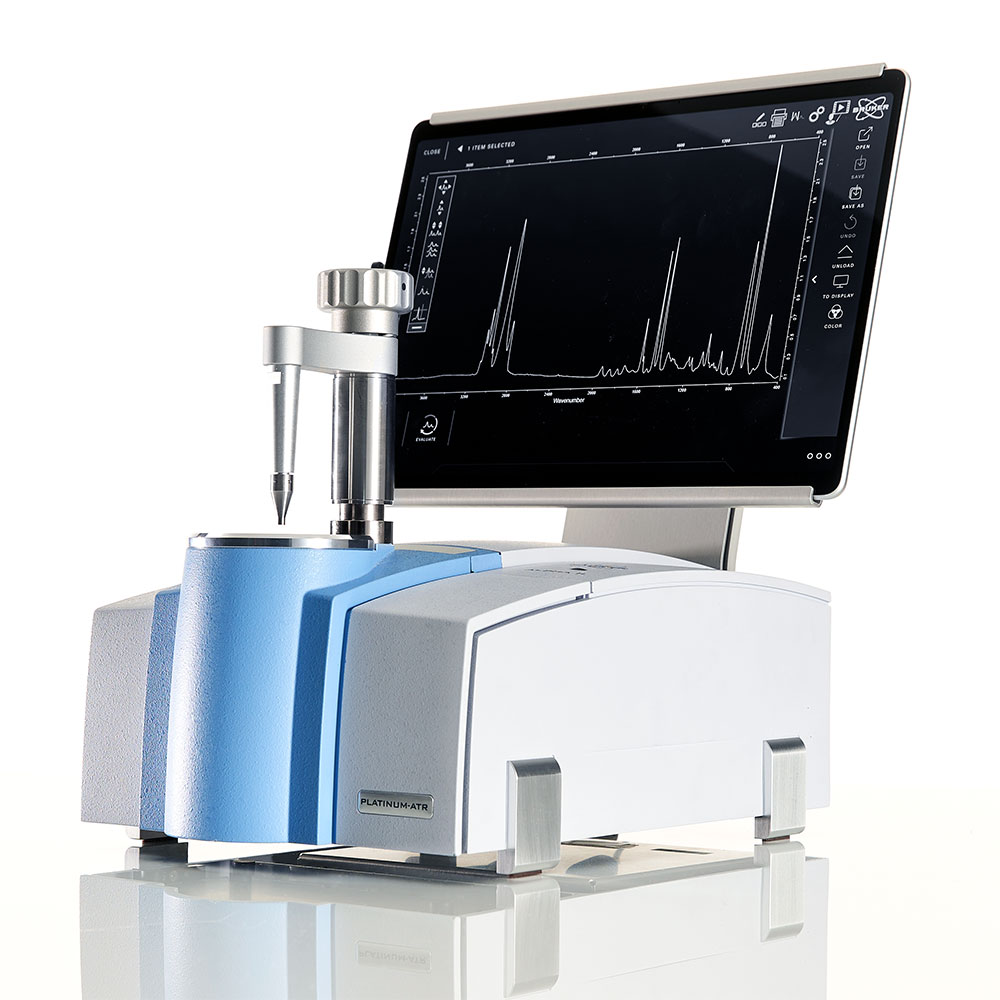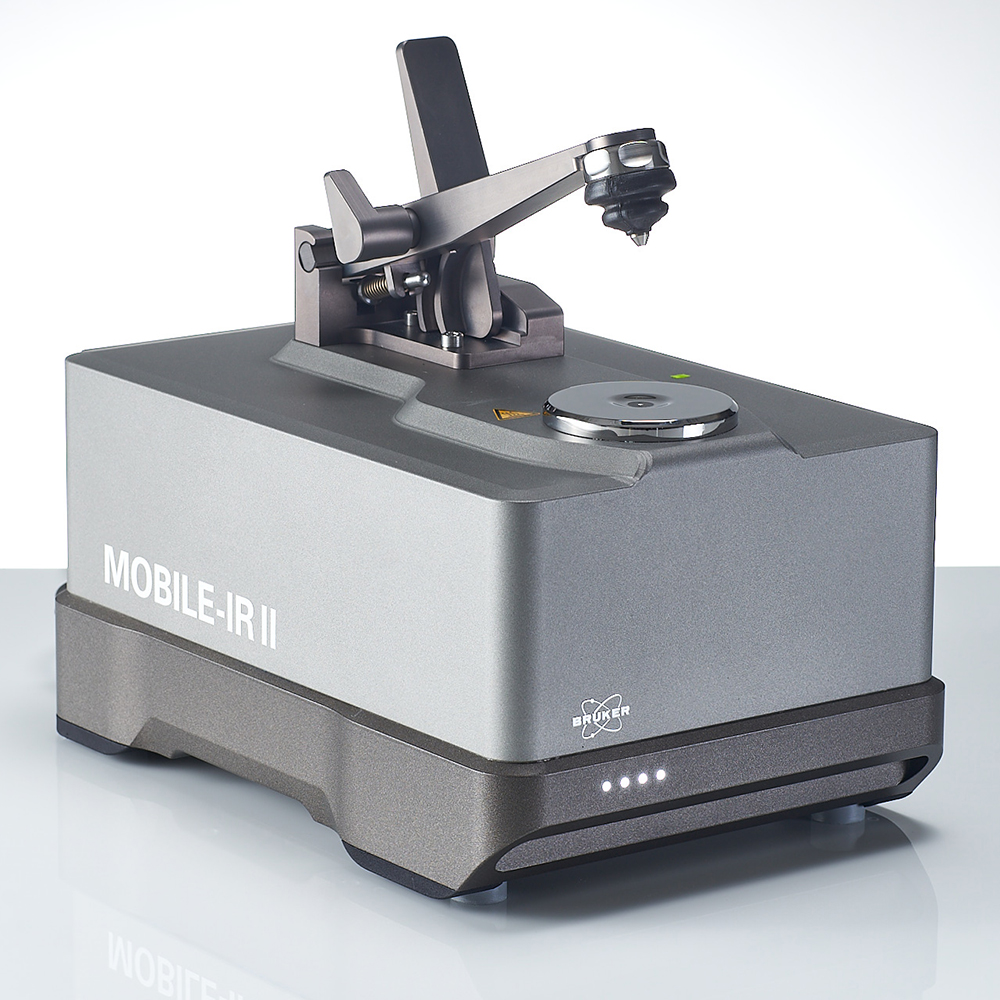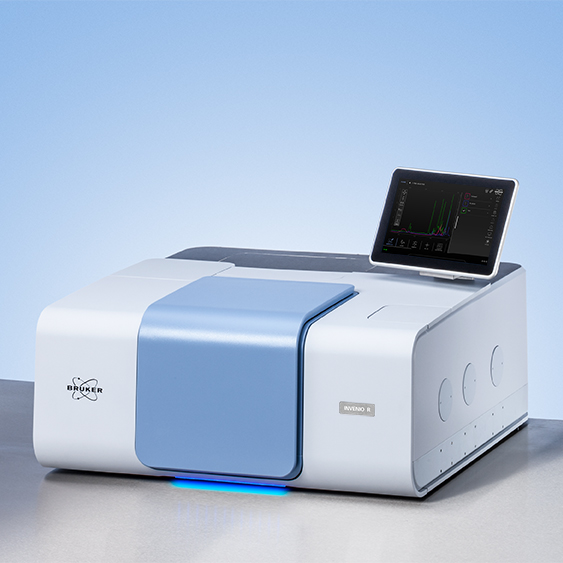Attenuated Total Reflectance (ATR)
What is attenuated total reflectance (ATR)?
At a high level, ATR simply involves directing light through a crystal to the sample being investigated. The light interacts with the sample, passes through the crystal again, and is then detected. But let’s dig a little deeper into what is going on during this process.
The internal reflection
The way light travels through different mediums is governed by a property called the refractive index. The refractive index essentially tells us how much that medium bends light that’s travelling through it. This means that as light travels from one medium to another the light beam will bend and travel at a different angle. For example, air has a different refractive index than glass, so as a beam of light travels from air to glass the angle of the light beam will change.
However, if the angle of the light beam is just right and the second medium has a lower refractive index than the first medium, the beam of light can be internally reflected instead. This means the beam of light will just bounce off the second medium and travel back through the first medium.
This is what happens during an ATR experiment. The crystal must have a higher refractive index than the sample so that the beam of IR light will be internally reflected and simply bounce off the sample and travel back through the crystal. But if the light is just bouncing off the sample, how does the infrared light interact with the sample enough to create the IR spectrum?
The evanescent field
Though light often appears to travel in a beam, it actually travels like a wave and waves tend to spread out a little bit in space. This means that although the light traveling through the crystal is internally reflected, some of the light can slightly penetrate the sample.
This light that interacts with the sample is often referred to as an evanescent wave or evanescent field. The intensity of this field decays rapidly, so the IR light only interacts with the first few microns of the sample, allowing us to get an ATR FT-IR spectrum. The depth of penetration depends on the crystal material (see below).
The ATR spectrum
Because of the way ATR is performed there are some slight differences between a spectrum obtained using ATR and one obtained using transmission. In ATR the IR light is refracted, and different wavelengths of IR light get refracted slightly differently. This results in some wavelengths of IR light penetrating the sample deeper than other wavelengths. In transmission however, the IR light goes directly through the sample so the penetration depth of the different wavelengths of IR light isn’t a factor that can influence the spectrum.
While an ATR spectrum looks fairly similar to a transmission spectrum, with the same basic band patterns, there will be some differences between spectra obtained by these two measurement techniques. Namely, the variation between the different wavelengths of IR light can cause the intensities of some signals to change as well as their position on the spectrum. Fortunately, these differences are easily corrected by modern computer software, allowing for the direct comparison of spectra obtained by ATR and transmission.
Benefits of using ATR
ATR has become the go-to measurement technique for FT-IR spectroscopy for numerous reasons. A huge advantage ATR has over transmission measurements is that there is no need for extensive sample preparation. A high-quality IR spectrum can be obtained for almost any type of sample: liquids, pastes, powders, pellets, or even larger work pieces and finished products.
The sample can be virtually any material, size, or shape and the spectral quality will still be excellent. This makes ATR experiments extremely easy to perform, with great reproducibility, and with little to no chance of operator error. Additionally, ATR is also a non-destructive technique since no sample preparation is required. On top of that, it’s easy to clean up after an ATR experiment - just wipe down the crystal with a soft cloth and a little bit of alcohol and your done!
About ATR experiments and crystal materials
ATR is suited for a wide variety of samples due to the large number of accessories and crystal types available. Accessories that apply pressure can be used to analyze solid samples to ensure there is good contact between the sample and the crystal. A flow cell can be attached to easily inject multiple liquid samples. The crystal can be heated to easily vaporize a solvent that was used to extract the desired sample.
The possibilities with ATR are nearly endless.
Some care must be taken in choosing the crystal used in ATR experiments though, as different materials have different properties that make them better suited for different samples. There are three commonly used materials for crystals: diamond, germanium, and zinc selenide.
Overview of common ATR crystal materials
| Diamond (Di) | Germanium (Ge) | Zinc Selenide (ZnSe) | |
| Accessible spectral range | 45 000 - 10 cm-1 | 5 000 - 600 cm-1 | 20 000 - 500 cm-1 |
| Hardness (Knoop) | 9 000 | 550 | 130 |
| Refractive index | 2.40 | 4.01 | 2.43 |
| Penetration depth | 1.66 µm | 0.65 µm | 1.66 µm |
| Chem. / phys. inertness | very-high | medium-high | low |
Diamond ATR
Diamond is a great universal material as it works well for almost any sample. Diamond is extremely hard and chemically inert, so it is very resistant to chemical and physical damage. Since diamond is so hard, it’s the only crystal material that is suitable for analyzing samples that require a high-pressure accessory.
While diamond is well suited for most applications, it doesn’t have a high enough refractive index to analyze everything. Samples that have very high refractive indexes, such as black carbon filled rubber, will need a different crystal material for analysis.
While diamond isn't the most affordable choice of crystal material it is extremely durable. Thus, a diamond ATR crystal will last a long time and purchasing a diamond crystal is generally a good investment in the long run.
Germanium ATR
Germanium has a much higher refractive index than diamond, so it’s extremely useful for analyzing samples that other crystal types cannot. Germanium excels at analyzing strongly absorbing, dark materials and it’s widely used in high resolution FT-IR microscopy thanks to the immersion lense effect.
Since penetration depth is shorter, Germanium crystals generally produce weaker signals, which limits its usefulness as a crystal material. However, this does make it useful for applications like selectively analyzing thin layers of a sample’s surface, e.g. polymer film coatings.
Though germanium works great in these applications, it does have some downsides. First, germanium has a very narrow spectral range compared to other crystal materials so the range of analysis can be limited. Germanium is also easily damaged, scratched or dented by harder samples.
Zinc Selenide ATR
Zinc selenide is another crystal material that is well suited for a broad range of applications and can be used in many of the same application that diamond can. Given that it is much cheaper than diamond, this crystal is a good choice for many.
However, zinc selenide isn’t nearly as durable as diamond is. Not only is it less hard and therefore more prone to damage, it's also far less chemically resistant. Zinc selenide is only operable in a pH range of 5-9. Samples with a pH higher than 9 may damage the crystal and acidic samples with a pH less than 4 can react with the crystal to produce SeH2, a toxic, flammable gas.
Multi-reflection or multi-bounce ATR
Another crystal option to consider is a multireflection accessory. This is a long, rectangular ATR crystal made of zinc selenide, that allows the IR light to bounce though it multiple times. This means the IR light interacts with the sample more, which increases how much IR light the sample absorbs.
Multireflection accessories are extremely useful for creating a high-quality spectrum for samples that don’t absorb IR light very well or are at a low concentration. It also useful for quickly and easily analyzing liquids and pastes. ATR is an extremely versatile measurement technique for FT-IR spectroscopy. It’s easy to use, easy to maintain, and has plenty of options so nearly any sample can be analyzed. Because of these strengths, it’s no wonder ATR has become the most common measurement technique for FT-IR spectroscopy.




